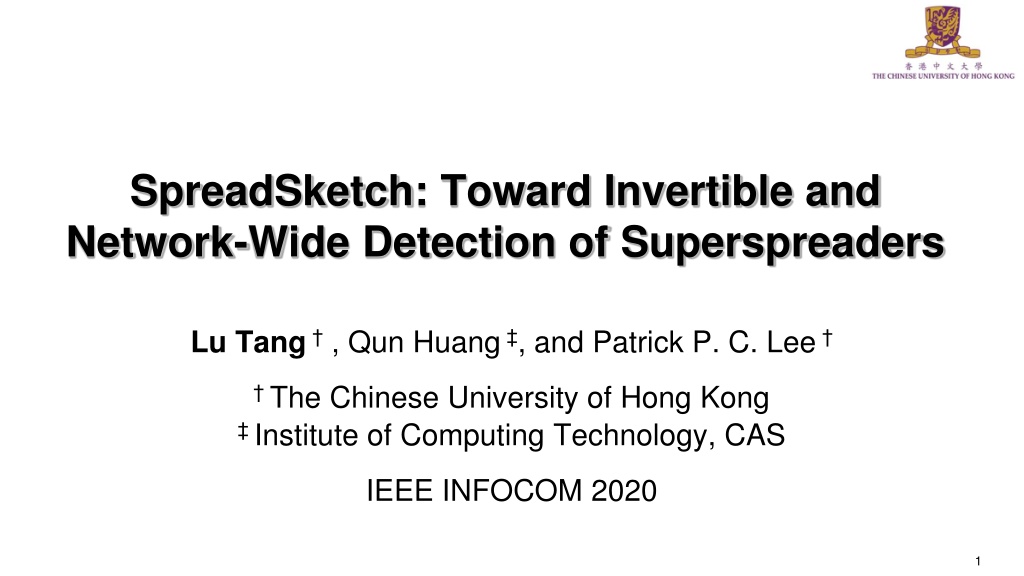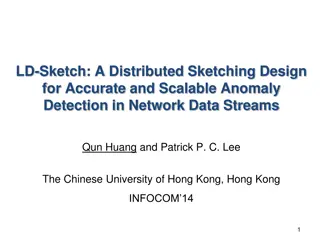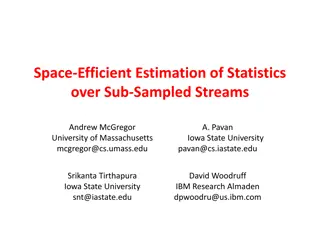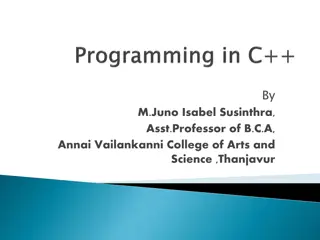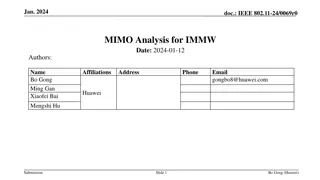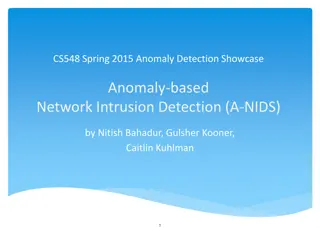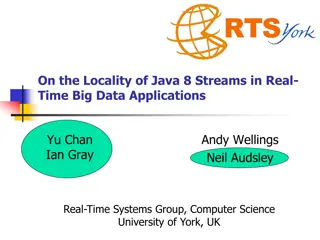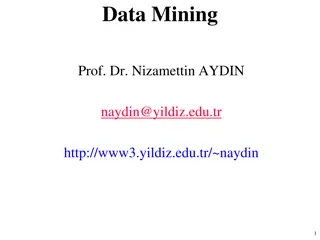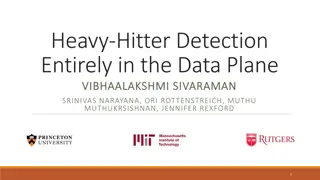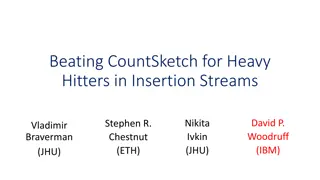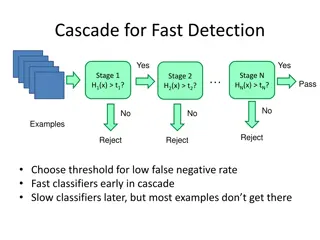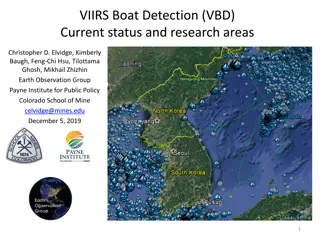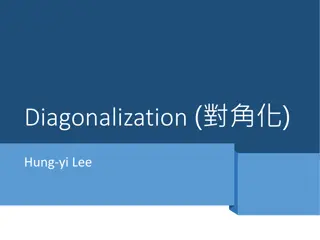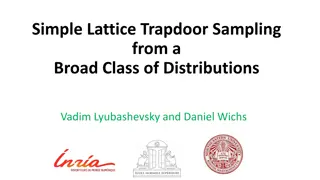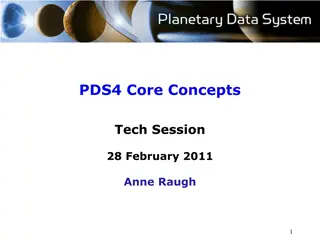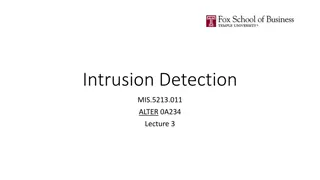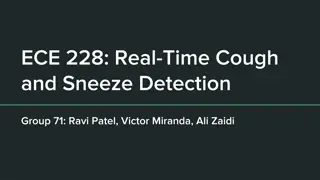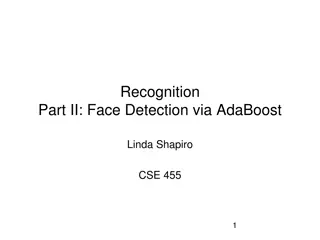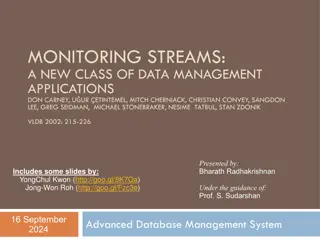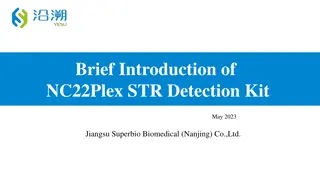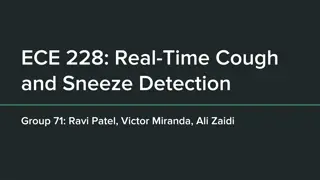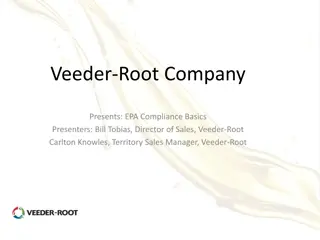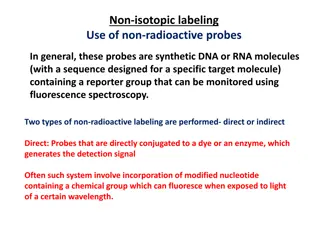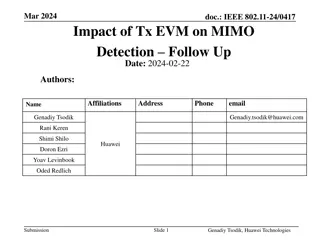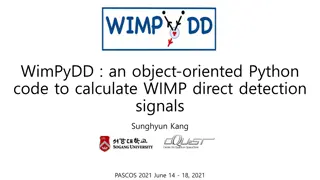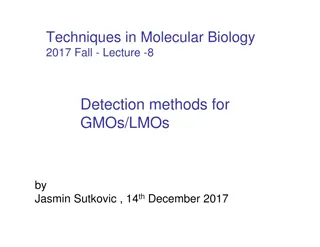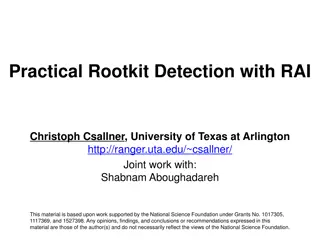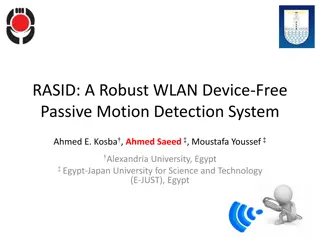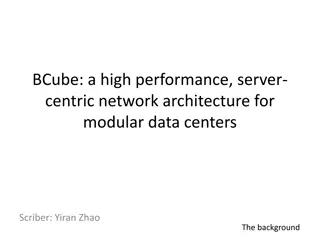SpreadSketch: Invertible Superspreader Detection in Network Data Streams
SpreadSketch introduces a fast and invertible sketch for detecting superspreaders in network data streams. It offers high processing speed, compact memory usage, and network-wide visibility of superspreaders. The sketch is theoretically analyzed for accuracy, space, and time complexity, showing superior performance over existing sketches. Extensive experiments on real-world network traces demonstrate its feasibility and efficiency on Barefoot Tofino switches.
Download Presentation

Please find below an Image/Link to download the presentation.
The content on the website is provided AS IS for your information and personal use only. It may not be sold, licensed, or shared on other websites without obtaining consent from the author. Download presentation by click this link. If you encounter any issues during the download, it is possible that the publisher has removed the file from their server.
E N D
Presentation Transcript
SpreadSketch: Toward Invertible and Network-Wide Detection of Superspreaders Lu Tang , Qun Huang , and Patrick P. C. Lee The Chinese University of Hong Kong Institute of Computing Technology, CAS IEEE INFOCOM 2020 1
Superspreader Detection Network traffic: a stream of packets denoted by (?,?) pairs ?: one or more source fields in the packet header e.g. ? = (?????) or (?????, ???????) ?: one or more destination fields in the header Spread of ?: ? ? = #(distinct y) ? connects to Superspreaders: sources with large spreads Same definition applies to destinations Detecting superspreaders in real time is critical DDoS attacks, port scanning, hot-spots 2
Challenges Network-wide view The myriad connection of a superspreader can span the entire network Fast processing and detection speed e.g. 10 Gb/s link: one packet every 67 ns Mitigating malicious attacks requires fast recovery of superspreaders Memory efficiency Programmable switches: 1-2 MB per stage [Bosshart, SIGCOMM 13] Servers: tens of MB of SRAM 3
Sketches Sketches: summary data structures e.g., Count-Min [Cormode, 2005], Count Sketch [Charikar, 2002] Idea: project high-dimensional data into small subspace Count-Min [Cormode, 2005]: Update with a packet Hash flow key to one counter per row Increment each hashed counter Query a flow Return the minimum among all hashed counters +1 +1 +1 Packet ? +1 Each element is a counter 4
Sketches Good: Memory efficiency Fast processing speed +1 +1 +1 Packet ? Bad: Unable to count the number of distinct flows Counters in Count-Min only count the frequency of each flow in the stream Non-invertible Cannot readily return all superspreaders e.g., Count-Min needs to enumerate all possible flows in entire flow key space to recover all superspreaders +1 5
Our Contribution SpreadSketch, a fast and invertible sketch for network-wide superspreader detection in network data streams Fast and invertible High processing speed, fast recovery of superspreaders Compact: small and static memory usage Network-wide:network-wide view of superspreaders Theoretical analysis on accuracy, space, and time complexity Extensive experiments on real-world network traces Higher accuracy and performance over state-of-the-art sketches Feasibility on a Barefoot Tofino switch with resource efficiency 6
Observations SpreadSketch:non-trivial extension of Count-Min Build on two observations Observation I: Highly skewed fan-out distributions CAIDA19: top 1% sources account for 60% total spread CAIDA18: top 10% account 67% CAIDA16: top 10% account 38% A superspreader dominates its hashed bucket in sketch w.h.p. 7
Observations SpreadSketch:non-trivial extension of Count-Min Build on two observations Observation II: Rough fan-out estimation via hash strings hash (?,?) 0000101011100011 Pattern 0?1 appears with probability 2 ? 1 Level Level value: length of the most significant 0-bits ? provides a rough estimation for the number of distinct pairs Similar ideas appear in Probabilistic Counting [Flajolet, 1985], HyperLogLog [Flajolet, 2007] 8
Design Main Idea Track the source in each bucket that dominates the bucket s spread By observation I, a superspreader w.h.p. to be tracked in the sketch Achieve invertibility in sketch Find the source with highest spread by tracking highest level value By observation II, the source with the highest level has the highest spread Replace integer counters in sketch with distinct counters Enable distinct counting in sketch Use multiresolution bitmap [Estan, IMC 03] 9
Design Data Structure Data structure: ? ? table of buckets Bucket ?(?,?) Flow key Level Spread ? rows ??,? ??,? ??,? ? buckets ??,?: Distinct counter to track the total spread in the bucket ??,?: the candidate source key with the highest level in the bucket ??,?, the maximum level seen in the bucket 10
Update Insert a source-destination pair (?,?) into the sketch Calculate the level ? hash(?,?) = 00011011 ? = 3 Map ? to one bucket per row For each bucket Insert (?,?) to V Compare ? with L Case 1: ? L, do nothing Packet (?,?) Bitmap Key Level Bitmap Key Level 5 5 V V ? ? Before After 11
Update Insert a source-destination pair (?,?) into the sketch Calculate the level ? hash(?,?) = 00011011 ? = 3 Map ? to one bucket per row For each bucket Insert (?,?) to V Compare ? with L Case 1: ? L, do nothing Case 2: ? > L, copy ? to K, update L Packet (?,?) Bitmap Key Level Bitmap Key Level 1 3 V V ? ? Before After 12
Query Get the estimated spread of a source ? Locate all hashed bucket of ? Return the smallest |??| ??: value of the bitmap ?? ?1 ?2 ?3 Source ? ?4 Optimization Combine all ?? by bitwise AND Return the value of the combined bitmap 13
Superspreader Detection Idea: consider all keys tracked by buckets Enumerate all buckets |??,?| > ? ??? ??? ? Get the estimated spread of ??,? ?????? ?(?,?) Report ??,? as a superspreader if its estimation exceeds the threshold 14
Network-Wide Deployment Architecture: ? > 1 monitoring nodes and a centralized controller Sketch Sketch Sketch Controller Monitoring node: maintain and send the sketch to controller Controller: merge all sketches and output superspreaders based on the merged sketch Goal: provide a network-wide view of superspreaders at controller 15
Network-Wide Scheme Monitoring node: no assumption on the deployment e.g. we can deploy SpreadSketch on any end hosts or switches Controller: construct a merged sketch Sketch1 Sketch2 Merged Sketch Bitmap Key Level Bitmap Key Level Bitmap Key Level 3 5 5 ? ? ? ?1 ?2 ?1 ?2 16
Theoretical Analysis Set SpreadSketch as a ? ? table of buckets On complexity Space complexity: (? ? (? + log? + loglog?)) ? is flow key space ? is #bits in bitmap of each bucket Per-packet update time complexity: ? Recovery time complexity: ? ? ? is the number of superspreaders On accuracy Bounded errors 17
Evaluation Setup Traces: three One-hour traces from CAIDA Trace CAIDA16 CAIDA18A CAIDA18B Unique flows 973023 1744694 6992108 Unique srcIP 452984 338332 1244441 Unique dstIP 107165 403462 1253639 #pkts 29077193 28516482 94819857 Average size per minute We compare SpreadSketch with: Distinct-Count Sketch (DCS) [Ganguly , ICDCS 07] Connection Degree Sketch (CDS) [Wang, TIFS 11] Count-Min-Heap (CMH) [PODS 05] RevSketch (REV) [Schweller, ToN 07] Fast Sketch (FAST) [Liu, INFOCOM 12] Vector Bloom Filter (VBF) [Liu, TIFS 16] 18
Result Accuracy CAIDA19 SpreadSketch is more robust and accurate compared with state-of-the-art sketches Similar observations on CAIDA18 and CAIDA16 traces 19
Result Speed SpreadSketch (SS) achieves throughput more than 22 MPPS it is easily catch up with10 Gbs line speed SpreadSketch recoverys superspreaders within few milliseconds Overall, SpreadSketch achieves both high update and recovery speed 20
Result Implementation on Hardware Switch resources usage of SpreadSketch (percentages in brackets are fractions of total resource avaiable) We implement SpreadSketch in P4 and compile it in a Barefoot Tofino chipset SpreadSketch consumes limited hardware resource SpreadSketch processes packets at line-rate on a Tofino switch 21
Conclusion SpreadSketch, an invertible sketch that enables fast and accurate network-wide superspreader detections in network data streams Contributions: Propose a new invertible sketch design to detect superspreaders High accuracy and robust on real-work traces Fast processing and recovery speed Feasibility on commodity hardware switches Detailed theoretical analysis on both accuracy and complexities Extensive experiments on real-world traces Source code: http://adslab.cse.cuhk.edu.hk/software/spreadsketch/ 22
Thank you! 23
Result Accuracy on CAIDA16 SpreadSketch (SS) Only slightly lower than CDS maintains accuracy between 0.86-0.96 25
Result Accuracy on CAIDA18 SpreadSketch(SS) achieves best accuracy on the moderate skewed trace 26
Existing approaches Streaming methods Compact Spread Estimator [Yoon, INFOCOM 09], Online Streaming Module [Zhao, IMC 05] Compact, however non-invertible Sampling methods Two-Phase Filtering [Bu, INFOCOM 09], Two Level Filtering [Venkataraman, NDSS 05] Unable to support accurate network-wide detection Sketch-based methods Count-Min-Heap [Cormode, PODS 05], FAST [Liu, TDASC 15], VBF [Liu, TIFS 16], CDS [Guan, GLOBECOM 09], RevSketch [NDSI 13] Large memory usage and high memory access overhead 28
We do not consider Two-Phase-Filtering in Two Reasons First, it does not support network-wide detection Recall drops below 0.65 even if using the maximum sampling rate Reasons: 1. A superspreader can be very small in each monitoring point to escape from sampling 2. Even if the superspreader is sampled in some of the points, the bias accumulated by the filtering makes its spread below the threshold Accuracy on CAIDA16. Similar results on the other two traces 29
We do not consider Two-Phase-Filtering in Two Reasons Second, it does not support query for the spread of any given flow It only keeps the spread information of large flows Comparing SSketch with TPF is similar to comparing Sketches with counter-based techniques in top-k problems. 30
The Choice of Distinct Counters The ? field can be any distinct counter that satisfies Support intersection operation Support union operation Considering accuracy and efficiency, we use Multiresolution Bitmap [Estan, IMC 03] in our Spread-Sketch 31
